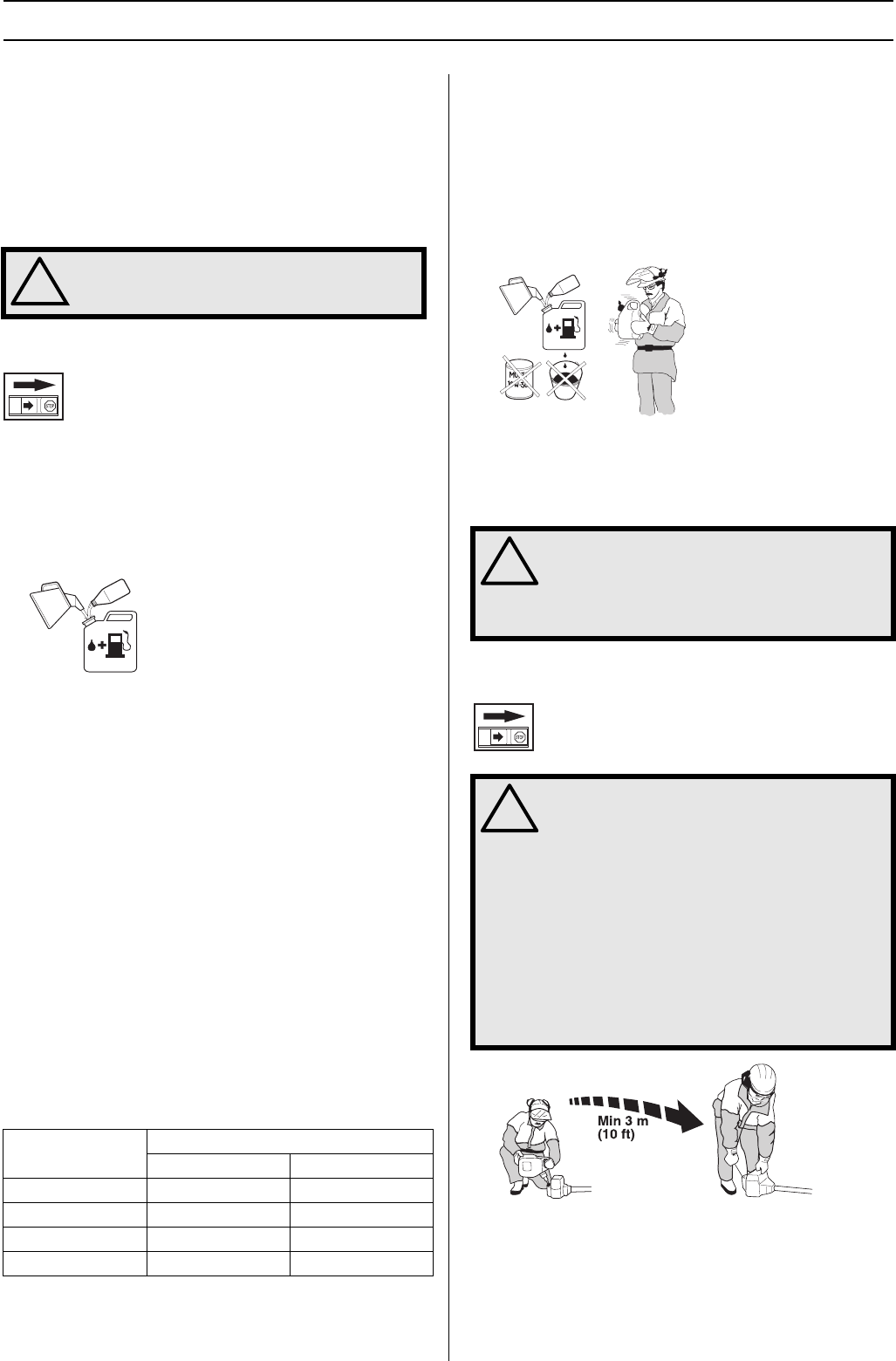
English – 15
FUEL HANDLING
Fuel
CAUTION! The machine is equipped with a two-stroke engine
and must always been run using a mixture of petrol and two-
stroke engine oil. It is important to accurately measure the
amount of oil to be mixed to ensure that the correct mixture is
obtained. When mixing small amounts of fuel, even small
inaccuracies can drastically affect the ratio of the mixture.
Petrol
CAUTION! Always use a good quality petrol/oil mixture (at
least 90 octane). If your machine is equipped with a catalytic
converter (see chapter on Technical data) always use a good
quality unleaded petrol/oil mixture. Leaded petrol will destroy
the catalytic converter and it will no longer serve its purpose.
Use low-emission petrol, also known as alkylate petrol, if it is
available.
• The lowest recommended octane rating is 90. If you run
the engine on a petrol with a lower octane rating than 90
this can cause knocking. This leads to an increased
engine temperature, which can result in serious engine
damage.
• When working at continuous high revs a higher octane
rating is recommended.
Two-stroke oil
• For best results and performance use HUSQVARNA two-
stroke oil, which is specially formulated for our two-stroke
engines. Mixture 1:50 (2%).
• If HUSQVARNA two-stroke oil is not available, you may
use another two-stroke oil of good quality that is intended
for air cooled engines. Contact your dealer when selecting
an oil. Mixing ratio 1:33 (3%).
• Never use two-stroke oil intended for water-cooled
outboard engines, sometimes referred to as outboard oil.
• Never use oil intended for four-stroke engines.
Mixing
• Always mix the petrol and oil in a clean container intended
for fuel.
• Always start by filling half the amount of the petrol to be
used. Then add the entire amount of oil. Mix (shake) the
fuel mixture. Add the remaining amount of petrol.
• Mix (shake) the fuel mixture thoroughly before filling the
machine’s fuel tank.
• Do not mix more than one month’s supply of fuel at a time.
• If the machine is not used for some time the fuel tank
should be emptied and cleaned.
Fuelling
• Clean the area around the fuel cap. Contamination in the
tank can cause operating problems.
• Ensure that the fuel is well mixed by shaking the container
before filling the tank.
!
WARNING! Always ensure there is adequate
ventilation when handling fuel.
Petrol, litre
Two-stroke oil, litre
2% (1:50) 3% (1:33)
5 0,10 0,15
10 0,20 0,30
15 0,30 0,45
20 0,40 0,60
!
WARNING! The catalytic converter muffler
gets very hot during and after use. This also
applies during idling. Be aware of the fire
hazard, especially when working near
flammable substances and/or vapours.
!
WARNING! Taking the following precautions,
will lessen the risk of fire:
Do not smoke or place hot objects near fuel.
Always shut off the engine before refuelling.
Always stop the engine and let it cool for a
few minutes before refuelling.
When refuelling, open the fuel cap slowly so
that any excess pressure is released gently.
Tighten the fuel cap carefully after refuelling.
Always move the machine away from the
refuelling area before starting.


















